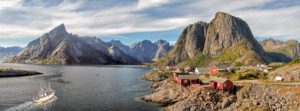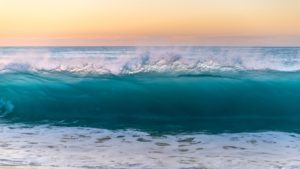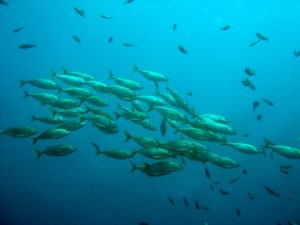In this interview, Mark Huang, one of the co-founders of SeaAhead, answers questions about their bluetech platform, startups, investing, and growing the blue economy.
Founded in 2018, SeaAhead is a bluetech startup platform headquartered in Boston, Massachusetts. SeaAhead in partnership with the New England Aquarium, runs the BlueSwell incubator, has about 60 startup member companies, and organizes events and challenges to catalyze innovation for ocean sustainability. The platform also convenes the Blue Angels investment group to help emerging startups obtain financing. SeaAhead has an open innovation methodology with technologists, corporations, scientists, startups, investors, governments, and other ocean-related stakeholders working to make new connections in the marine technology ecosystem in shipping, ports, fisheries, aquaculture, coastal pollution & resiliency as well as offshore renewables.
The Liquid Grid [TLG]: How did you come to co-found SeaAhead?
Mark Huang [MH]: Long story short, we did it because of the thesis that the disruptions that you saw in renewable energy, automotive and food and agriculture are now ripe to happen in ports, shipping, and seafood. This millennial generation has bucked historical trends. It eats (healthier), moves (isn’t obsessed with the car) and works (where, how, and why) differently. Young adults today are more sensitive to where and how their food is made and where it comes from. That’s all about to spill over into seafood. Consumers are starting to ask, “Is this local, and does it help my community?” “Is this sustainable?” “If it’s wild, is there traceability to prove it’s not being overfished?” On the shipping side, you are seeing a global regulatory push to reduce emissions with the United Nations International Maritime Organization’s targets to reduce emissions by 50% by 2050. The same goes for ports, which as concentrated economic nodes, produce high criteria emissions which frequently impact the health of neighboring communities. Then, of course, there’s growth in offshore renewables, increasing awareness about ocean plastics and the widening question of coastal resiliency – which all translate into future investment. These are some of the opportunities we see in bluetech where like utilities, automotive, and food and agriculture, open innovation is now starting to play a role in our ocean economy.
This concept of startups working on the oceans is relatively new. But so was a solar startup in 1998 or a battery startup in 2003 or an organic food startup five years later. We formed SeaAhead to help create an economic cluster around bluetech. New England has a wide breadth and deep bench of capabilities related to bluetech. We started by teaming up with the Cambridge Innovation Center in Boston, the epicenter of New England’s venture capital and startup ecosystem and have since expanded to Providence, RI. The power of the triple bottom line tied to the ocean is powerful for the US and each coastal region has unique, core competencies. We are also working closely with the University of Southern Mississippi to help the MS Gulf Coast expand their blue economy cluster as well as the Gulf of Maine Research Institute in Portland, ME to focus on assisting seafood-related startups in the Gulf of Maine.
[TLG]: You alluded to this, but why are Boston and New England such great places for marine technology and innovation?
[MH]: There is a dense ecosystem of ocean-related academia and research institutions, such as the Woods Hole Oceanographic Institute. Up North, Maine has aquaculture, shipbuilding, and wild fisheries – including, of course, lobsters. The Massachusetts coast has wild fisheries but also global leadership in STEM-based venture innovation centered around Boston while Southern New England has a U.S. Navy cluster anchored by shipbuilding, research, and operations.
We formed SeaAhead because unlike life science, cleantech, robotics or tech, an ocean-facing entrepreneur had difficulty finding mentorship, a relevant place to work, and financing. The whole US Northeast with Boston as its anchor is now ripe to be a global center of excellence for a new economic cluster focused on the growth sectors of the global Blue Economy.
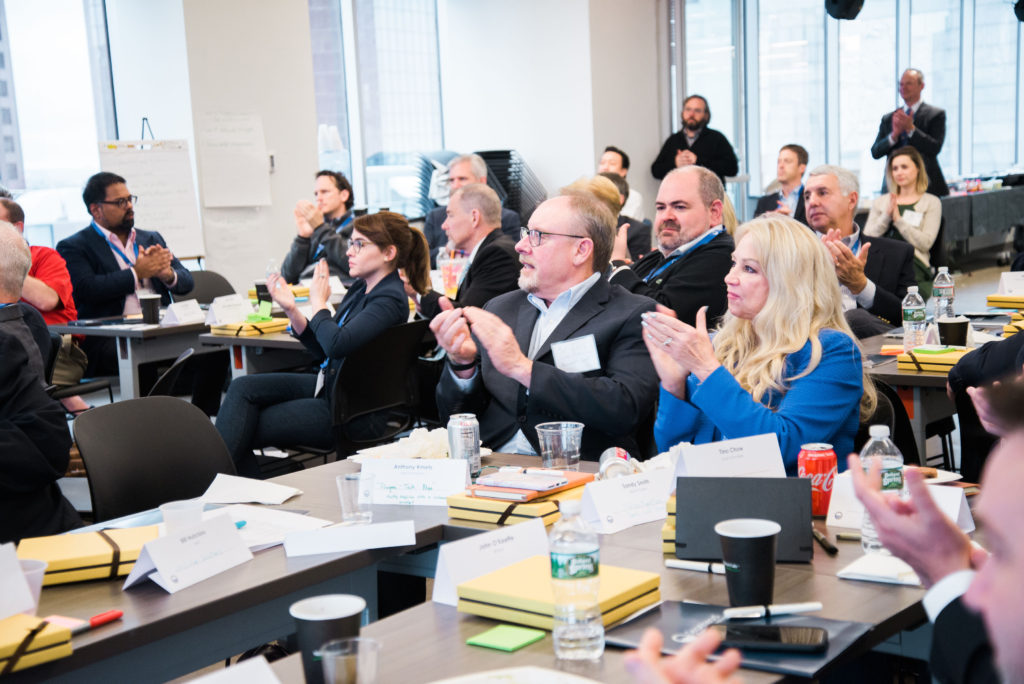
[TLG]: Honing in a bit, what is a project you’re particularly excited about? It would be great to discuss an example from one of SeaAhead’s focus areas: urban waterfront, sustainable maritime, living ocean, and offshore renewable energy?
[MH]: One of our member companies is Onvector. They have a plasma treatment technology spun out of Drexel University. They felt they needed to work out of the Boston-Cambridge area as a cleantech startup where their technology is targeting the treatment of PFAS ( ‘forever chemicals’). We met the CEO in Boston a while back and presented the issue of invasive species transferred by ballast water in commercial vessels. Upon a mutual review it was determined that Onvector’s technology could be applied to tackle this invasive species issue. We introduced Onvector to the University of Rhode Island and through a State of RI innovation voucher – an independent test was performed confirming that Onvector’s technology could work on invasive species in ballast water. Through maritime connections, we also helped them get exposure to the maritime sector which resulted in a cruise ship pilot project for grey water just prior to the pandemic lockdown. Vinci VR, part of BlueSwell’s pilot cohort, is another example of cross fertilization. This virtual reality startup started on defense related training applications and with SeaAhead’s assistance, they are now currently working with a large Offshore Wind turbine OEM to use their virtual reality platform for a workforce development application.
[TLG]: So it’s not as if you’re always helping to invent new technologies? Sometimes it’s about repurposing existing technologies for the ocean space.
[MH]: Yes, that’s exactly how we see the value proposition. We try to do one of two things. First, we try to get technology out of the ideation stage and applied to the ocean economy. Second, we look to connect technologies from other sectors that do not focus on the ocean. In addition to the two examples that I just mentioned, cross fertilization can also apply to new agriculture focused sensors and data analytics that could expand their reach to the coast or more sustainable alternative feeds, such as the meal worm startup BetaHatch. BetaHatch is seeking to feed poultry as well as displace catching wild small fish for aquaculture feed
[TLG]: Is SeaAhead working on any new technologies that could have a particular impact on New England’s environment? I’m wondering specifically about offshore renewable energy and ropeless fishing gear to prevent entanglements of endangered North Atlantic Right Whales.
[MH]: Yes, we are seeing some startups working on ropeless fishing technology. One of them is based in Mississippi, testing at Cat Cove with Salem University where the founder is a diver. He has a smart, self buoyant aquaculture cage that could possibly provide a workable solution around marine mammal entanglement. But a lot more work needs to be done on this critical issue. Extinction is forever and we need to help startups as best as we can to tackle difficult and acute challenges such as humanity’s continued threat to the remaining Atlantic Right Whales.
[TLG]: It looks like SeaAhead is trying to vertically integrate across the innovation value chain with the Blue-Green Innovation Challenge, the Blue Angels, the Blueswell Incubator, and generally serving as a marine technology innovation hub. Do you plan to expand on these opportunities for the marine technology community?
[MH]: It’s interesting that you call it a vertical integration. I would actually rotate your question by 90º degrees since we call ourselves a platform. The metaphor I use is a stool. We have membership, we have an incubator, we have a financing group looking to raise a bluetech seed fund, and we are assisting economic cluster formation in coastal communities to grow the Blue Economy. These are four legs of the stool. Are we going to expand in marine technology? Yes. For example on May 25th, we had our Green H2 – Alternative Marine Fuels event which kicked off the launch of our OSW-Maritime Vertical. This vertical of industry stakeholders will help focus the platform to assist the global shipping and ports sector tackle some of their toughest challenges starting with UN IMO 2050.
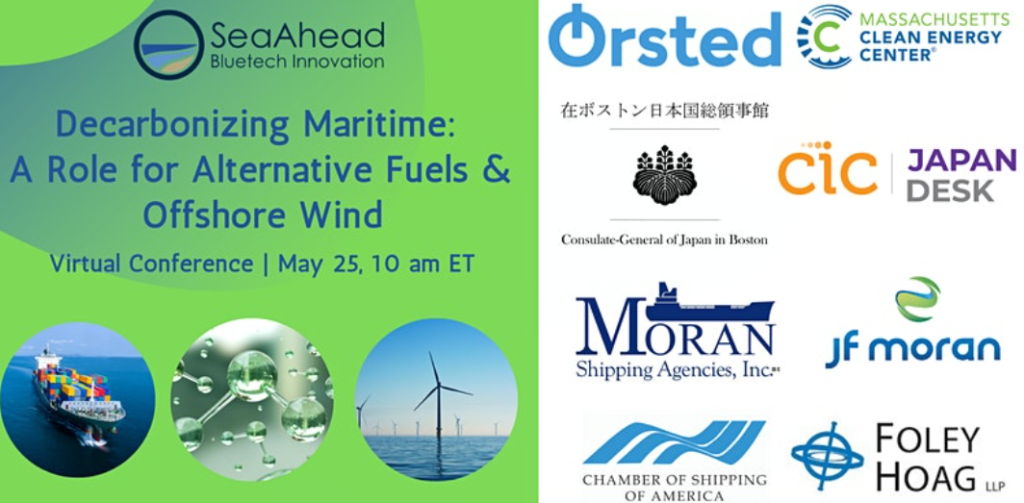
[TLG]: What advice do you have for aspiring marine technology startups?
[MH]: Timing is everything. This dates me, but again think about the first solar or food startups. Marine technology is poised to experience similar growth. There is a developing marine technology ecosystem, and SeaAhead is part of it. The global maritime sector is historically siloed and is just starting to consider open innovation. The industry is naturally conservative. But it is at a crossroad as it faces a plethora of new regulations as well as the threats and opportunities of digitization. No one should say that being a maritime tech startup will be easy with a fast adoption rate but the stage is set for entrepreneurs to start to make an impact on this critical global sector.
And of course, we are not the only ones seeking to help entrepreneurs. The ecosystem is growing globally and many coastal regions in the world are responding with open innovation platforms. The support network for upcoming entrepreneurs is only getting stronger. A few years ago, my fellow co-founder Alissa Peterson and I met a few promising graduates from Southern New England who had innovative ideas for the ocean space. But they had nowhere to go, no network, no mentorship, and no funding. After five months, they gave up and went to work for a software company. Three years later, we can now say that these entrepreneurs at least have an on-ramp to start their journey. Always seek help and manage your expectations.
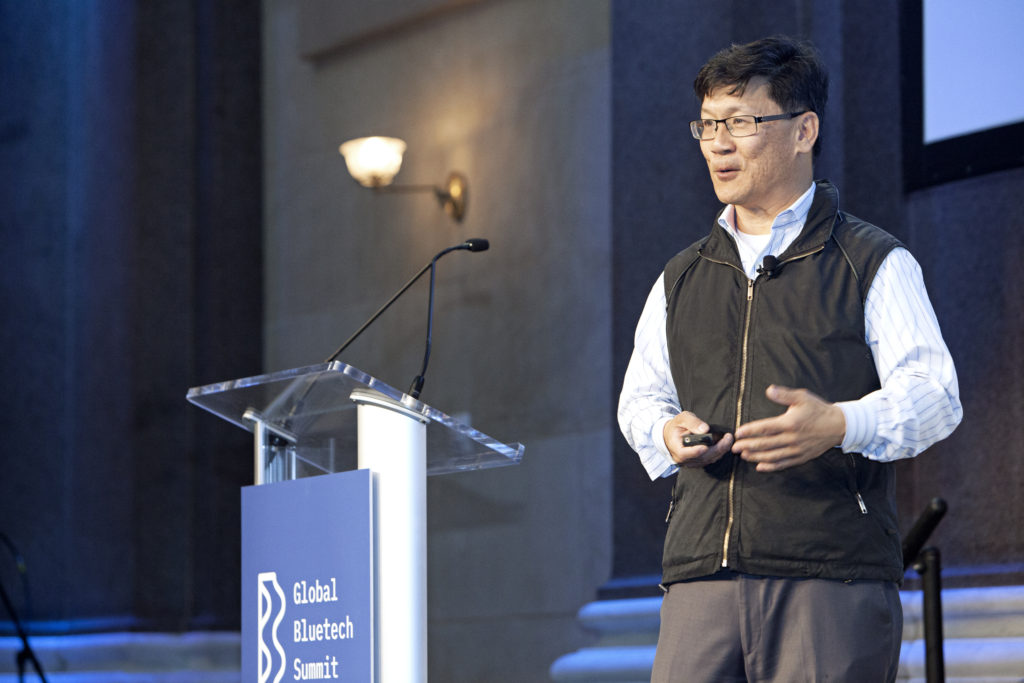
Mark Huang is one of the co-founders of Sea Ahead. Originally trained as a marine engineer and naval architect, he went on for his MBA as well as a Masters in International Affairs with a focus on economic development. He had spent ten years at GE in cleantech corporate venture capital and left GE Capital’s Energy Financial Services group as a Senior Vice President to successfully co-found a new cleantech VC fund. His career has tracked the emergence of renewable energy, the electrification of transportation, the digitization of lighting as well the shifts in the US Food sector. Mark remains committed to the role that new sustainability-focused sectors and venture-based entrepreneurship play to create new, resilient jobs across the skill spectrum helping to tackle the US’s expanding income inequality gap. Mark’s public sector service has included deployment to Baghdad as a US Army Reserve officer where he focused on nation-building. He also had a stint as the Economic Development Officer for the City of Providence where he focused on stimulating innovation, the blue economy and developed and executed on an Urban Food Strategy.

